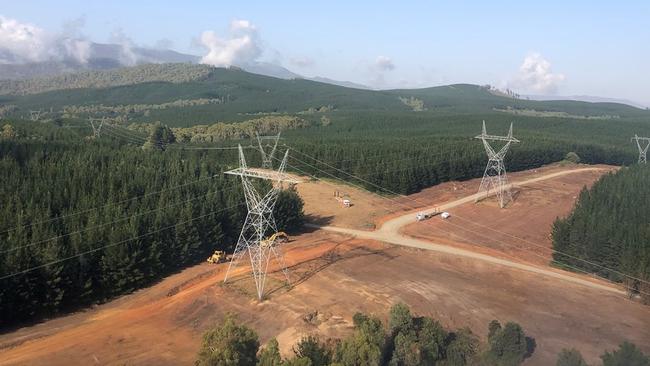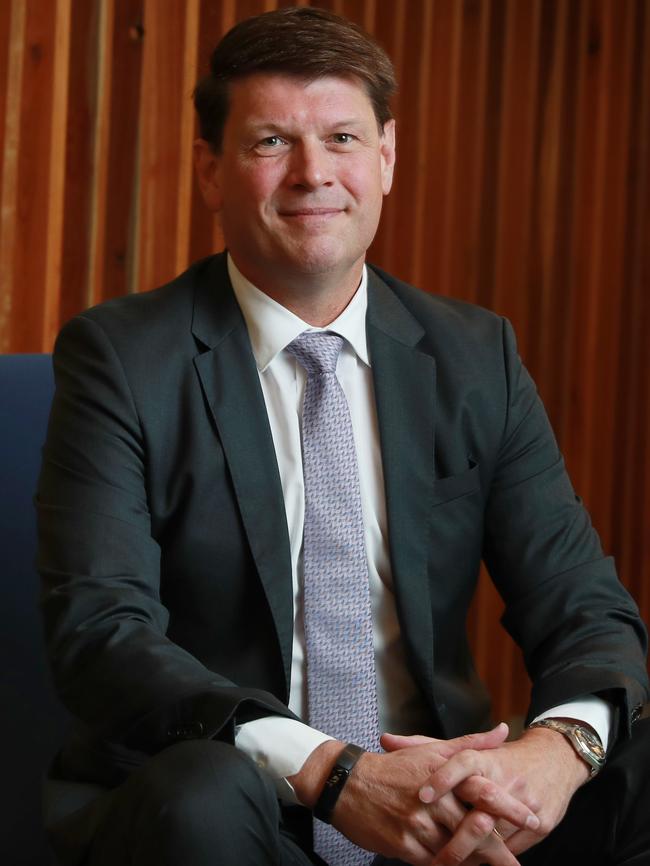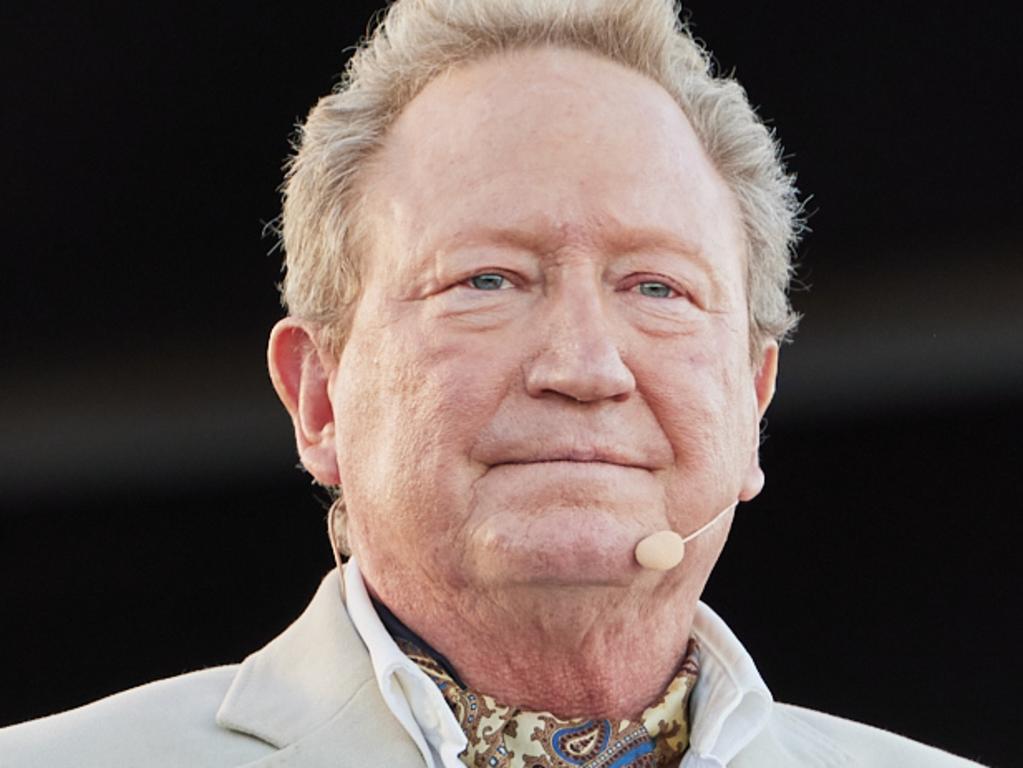
Surely this sets a record for underestimating the cost of a transmission line, though still well short of the 1000-plus per cent increase of its triggering project, Snowy 2.0.
HumeLink is the proposed 360km 500kV transmission line connecting Snowy 2.0 to Bannaby (near Goulburn) and Wagga Wagga in NSW. TransGrid estimated its cost in January 2020 to be $1.35bn, which drops to about $1bn after adjusting for the latest double-circuit design (cheaper and shorter).
The cost update was revealed a few weeks ago by TransGrid chief executive Brett Redman when questioned at the NSW inquiry into undergrounding transmission lines. In justifying the updated cost he compared it with a previous estimate of $3.3bn provided in July 2021, saying it was “about three or four years old … the cost of infrastructure and transmission has gone up about 30 per cent”. However, the $3.3bn estimate is two years old, not three or four, and the actual increase over those two years is 50 per cent, not 30 per cent.
Not only has HumeLink’s cost soared fivefold over the initial estimate, but its capacity has dropped 370MW, from 2570MW to 2200MW. This means the cost/MW of transmission capacity has risen by around 570 per cent. Who knows what further blowouts there will be, especially given that construction won’t start for a year or more. How could TransGrid have got the cost so wrong? What are the ramifications?
The immediate issue is whether HumeLink provides a positive net benefit – do its benefits exceed its cost? Two years ago, TransGrid claimed it would provide a positive net benefit of $500m. At the time energy experts criticised the highly optimistic assumptions and dubious results, assessing the net benefit to be substantially negative. Nevertheless, the Australian Energy Regulator granted regulatory approval (RIT-T).
Since then the cost has increased by $1.7bn and the benefits will have declined due to many factors, including Snowy 2.0’s three or more-year delay, the now certain construction of two gas power stations, and the need to exclude $450m of “competition benefits” from the previous analysis in accordance with the current practice of the Australian Energy Market Operator. Paradoxically, TransGrid executives claimed at the inquiry that HumeLink’s benefits had risen by more than the $1.7bn cost increase and that Snowy 2.0’s delay had increased the net benefit and urgency for completion by the July 2026 target date. That all sounds counterintuitive.
It is also inconsistent with the warning given by AEMO in its 2022 Draft Integrated System Plan that the then estimated cost of $3.3bn must be cut: “Nonetheless, protection is needed against rising project costs. To ensure the benefits are robust, the project costs cannot materially increase from the current estimate of $3.3bn. Further work to drive down costs should be undertaken urgently.”
Surely the subsequent adverse variations in cost and benefits result in a sizeable negative net benefit, constituting a “material change in circumstance” and therefore prompting a review of HumeLink’s regulatory approval. But it seems not.
At the inquiry, AER deputy chairman Jim Cox acknowledged “we are concerned that the initial cost estimates proved to be so far wide of the mark” but then stated “we have no power … to reapply the RIT test. I think it is the proponent’s (TransGrid’s) responsibility”.

Incredibly, the energy regulator thinks it is powerless to intervene and will review its approval only if TransGrid asks it to. In the meantime the AER dutifully keeps authorising expenditure on HumeLink’s early works, approving another $200m recently to bring the total so far to $600m.
Who is looking after the interests of electricity consumers and the people of NSW? This project alone will increase NSW transmission tariffs by more than 50 per cent.
It should not be forgotten that the primary reason for building HumeLink, previously called SnowyLink North, is as part of the 1000km of transmission extensions needed to connect Snowy 2.0 to Sydney and Melbourne (HumeLink, Sydney Ring South and VNI West). Snowy 2.0’s capacity was recently updated to 2200MW, exactly the same as HumeLink’s new capacity. HumeLink will be “full” whenever Snowy 2.0 is pumping or generating flat out.
Why then are electricity consumers expected to bear the entire cost of HumeLink? Why isn’t Snowy 2.0 paying its fair share (the majority) of HumeLink and other transmission augmentations it requires to be able to operate?
There is no longer a need to frantically try to build HumeLink by 2026 in time for Snowy 2.0’s previous completion target. Snowy 2.0 is unlikely to be completed until sometime next decade. The 2026 target is impossible anyway, with so many transmission projects vying for limited resources and the lack of social licence from local communities for overhead lines.
The reduction in HumeLink’s capacity has also brought forward the prospect of further transmission capacity being required to connect the nascent renewable energy zones (REZ) in southern NSW and Victoria.
AEMO’s 2023 Transmission Expansion Options Report includes options (HumeLinkTwo) to increase the transmission capacity between Bannaby and Wagga Wagga and beyond by up to 6000MW at a cost of up to $3bn. And Sydney Ring South ($1.5bn) should be included in the mix as the generation from Snowy 2.0 does not complete its “journey” until it reaches Sydney. All up, this brings total expenditure for transmission from Wagga Wagga to Snowy 2.0 to Sydney to about $10bn, potentially by the end of this decade.
We definitely need to transition away from fossil fuels and we need additional transmission. But instead of taking a project-by-project piecemeal approach, the transmission requirements should be considered all at once (HumeLink plus HumeLinkTwo plus Sydney Ring South). Such consideration needs to include the legitimate concerns of local communities and the full costs and benefits – financial, social, and environmental – of the various alternatives.
The opportunity to adopt underground cables and DC as well as AC transmission must be seriously considered, not summarily dismissed as has been the case to date. Australia needs to catch up with the rest of the developed world and apply the latest and least impactful technologies for our future transmission network.
Crucially, Snowy 2.0 and the new solar and wind generators in the REZs must be required to contribute their fair share to the cost of new transmission, not leave electricity consumers with the full bill.
Let’s do HumeLink once and do it right. Whatever is built now will be with us for the rest of this century. The never-ending delays in Snowy 2.0 provide sufficient time to get this $10bn-plus investment right. HumeLink needs a rethink.
Ted Woodley is former managing director of PowerNet, GasNet, EnergyAustralia, China Light & Power Systems (Hong Kong) and a current board member of NSW National Parks Association.








The estimated cost for the HumeLink transmission line has just blown out to $5bn – a whopping five times the initial estimate of $1bn, less than four years ago.